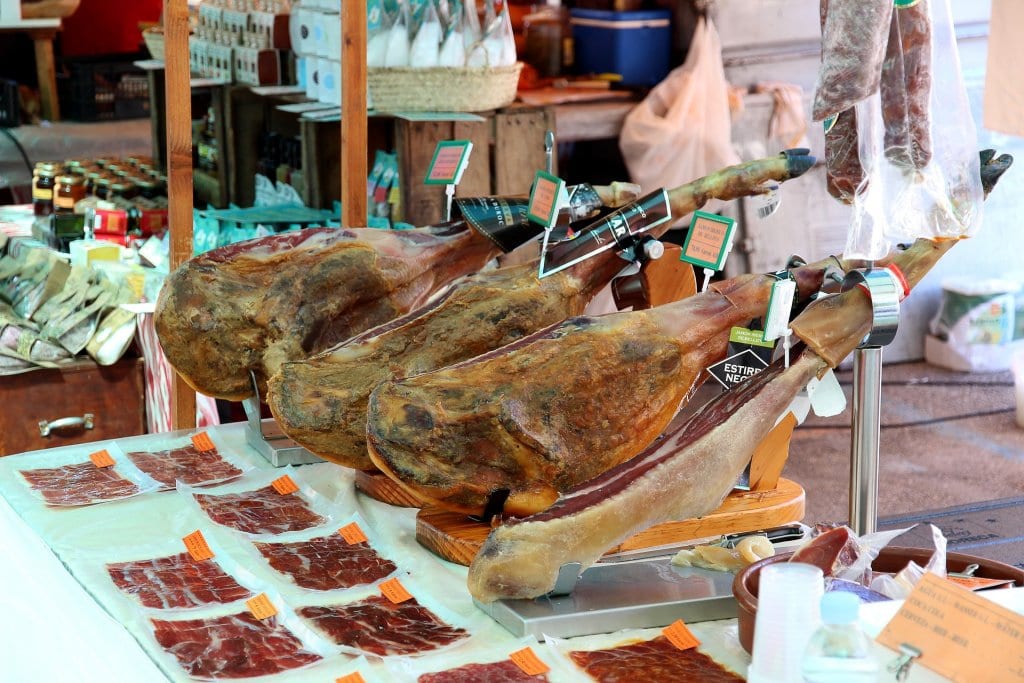Spanish ham, known as “jamón,” is a revered delicacy cherished for its rich flavor, unique texture, and centuries-old tradition. Whether it’s the world-famous Jamón Ibérico or the equally delectable Jamón Serrano, storing and serving Spanish ham properly is essential to preserve its quality and ensure a delightful gastronomic experience. In this comprehensive guide, we will explore the best practices and techniques for storing, slicing, and serving Spanish ham, allowing you to savor this culinary treasure to its fullest potential.
I. Understanding Spanish Ham Varieties
Before diving into the intricacies of storage and serving, it is crucial to familiarize ourselves with the different varieties of Spanish ham (Jamon). The two most renowned types are Jamón Ibérico and Jamón Serrano. Jamón Ibérico, made from the black Iberian pig, is the epitome of luxury, characterized by its marbled fat and intense flavor. Jamón Serrano, produced from white pig breeds, offers a milder taste profile and is often more accessible.
II. Proper Storage Techniques
Proper storage is paramount to maintain the quality and taste of Spanish ham. Here are some essential guidelines to follow:
- Temperature and Humidity:
- Store Spanish ham at temperatures between 15-20°C (59-68°F).
- Maintain a humidity level of around 60-70% to prevent the ham from drying out.
- The Ham Stand (Jamonería):
- Place the ham on a sturdy ham stand, known as a “jamonería,” to facilitate proper air circulation and easy slicing.
- Keep the hoof end (the bota end) facing upwards to prevent excess moisture accumulation.
- Covering and Wrapping:
- Protect the exposed surface of the ham by using a clean, breathable cloth or muslin.
- Regularly check the cloth to ensure it remains clean and replace it if it becomes damp or soiled.
- Location:
- Store Spanish ham in a cool, well-ventilated area away from direct sunlight and strong odors.
- Avoid storing it near aromatic ingredients that can alter its flavor.
III. Slicing Spanish Ham
Properly slicing Spanish ham is an art that requires practice and precision. Follow these steps to achieve thin, melt-in-your-mouth slices:
- Equipment:
- Use a long, flexible, and razor-sharp slicing knife to ensure clean and precise cuts.
- A ham holder or “jamónero” will provide stability during slicing.
- Ham Positioning:
- Place the ham with the hoof end (the bota end) facing away from you.
- Start slicing from the thinner end, called the “maza.”
- Cutting Technique:
- Begin with a vertical cut, removing the skin to expose the fat.
- Slice parallel to the bone, angling the knife to obtain thin, translucent slices.
- Adjust the thickness according to personal preference, ensuring consistency throughout.
IV. Serving Spanish Ham
The moment has arrived to savor the fruits of your labor. Here are some suggestions for serving Spanish ham:
- Room Temperature:
- Serve Spanish ham at room temperature to allow the flavors to fully develop.
- Remove it from the refrigerator at least 30 minutes before serving.
- Presentation:
- Arrange the ham slices on a platter, allowing guests to appreciate the marbled texture and vibrant color.
- Accompany the ham with traditional accompaniments such as fresh bread, extra virgin olive oil, and ripe tomatoes.
- Wine Pairing:
- Spanish ham pairs exceptionally well with dry white wines like Fino or Manzanilla Sherries or light-bodied red wines like Rioja or Ribera del Duero.
- Culinary Uses:
- Spanish ham is incredibly versatile and can be enjoyed in various culinary creations, including tapas, salads, pasta dishes, and sandwiches.
Storing and serving Spanish ham is a testament to the time-honored traditions and craftsmanship that have made it a global gastronomic treasure. By adhering to proper storage techniques and mastering the art of slicing, you can elevate your Spanish ham experience to new heights. Remember, each bite of this culinary masterpiece is a celebration of flavor, history, and culinary excellence. Enjoy the journey and relish the nuances that make Spanish ham a true delight.
